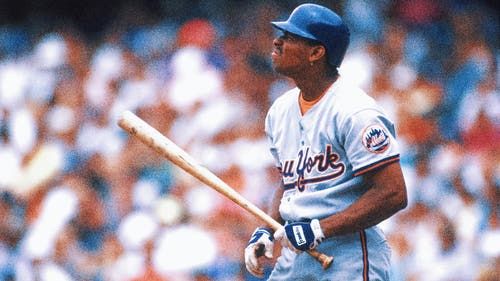
Did lack of player development lead Padres to fire Bud Black?
Often when a team fires its manager, its rationale becomes clearer after the fact.
I maintain that the Padres’ dismissal of Bud Black was inevitable because both ownership and general manager A.J. Preller inherited him, then made a series of upgrades that raised expectations to an almost unreasonable level.
Still, the idea that the team needs a fresh voice after nearly 8½ seasons under Black is not necessarily wrong. And one of the front office’s concerns about Black – that he and his staff weren’t proficient at developing position players at the major-league level – is at least worthy of exploration.
I learned of those concerns in conversations with major-league sources on Tuesday, the day the Padres officially named their Triple A manager, Pat Murphy, to replace Black. And though it’s certainly true that hitters such as the Dodgers’ Yasmani Grandal and Braves’ Cameron Maybin and Jace Peterson are enjoying greater success with their current teams than they did with the Padres, it’s not simply because they escaped Black.
The sample size is still relatively small. The Padres’ home field, Petco Park, is one of the least hitter-friendly in the majors. Plus, the hitting coach is far more responsible for the hitters than the manager – and the Pads are on their seventh hitting coach since Petco opened in 2004.
If club officials want to question Black, a former pitcher, for his failure to develop hitters, then they need to credit him for his success in developing pitchers, something that was one of the hallmarks of his tenure.
Oh, and another thing: The Padres did not trade players such as Grandal and Maybin because they feared that Black was mishandling them. They traded those players because, well, Preller chose to flip almost the entire roster last offseason, making one splashy move after another.
I’ll say this, though: There is a lesson for the Pads – and maybe for Black – in the revivals of teams such as the Pirates, Indians and especially the Royals, teams that buckled down and committed to their young talent.
Managers generally are not interested in player development; their primary concern is, “Can this player help me win tonight?” Yet, greater patience is required with low- and mid-revenue clubs, greater vision. A manager needs to take a broader view to evaluation, commit to the potential of a player, believe in what the player can be.
Perhaps no manager does this better than the Royals’ Ned Yost, who nurtured youngsters such as Eric Hosmer and Mike Moustakas through their struggles. The Pirates’ Clint Hurdle is another example, in an organization in which the coordination between the field staff and front office is almost seamless.
The Indians’ Terry Francona, Orioles’ Buck Showalter also seem to get it, as do some of the new managers -- the Rangers’ Jeff Banister and the Diamondbacks’ Chip Hale, the Rays’ Kevin Cash and the Twins’ Paul Molitor. But even for the most understanding managers, the conflict between present and future is a daily challenge.
Black was no different. I could present an endless list of pitchers who developed under his watch, from the Mike Adams-Luke Gregerson-Heath Bell relief trio to the current Andrew Cashner-Tyson Ross combo in the Padres’ rotation. But he, too, would lose patience with players. Almost all managers do.
According to one source, Black didn’t believe in Anthony Rizzo, who blossomed into a star with the Cubs after getting traded for Cashner. Even certain pitchers – Jesse Hahn, Brad Boxberger, Edinson Volquez – became more well-established once they left the organization.
For the most part, though, Black got the most out of what he had. Even this season, the Padres actually might be overachieving based upon their component statistics -- BaseRuns, which estimates the number of runs a team should have scored and allowed, projects that the team should be 27-40, not 32-35.
Perhaps the team somehow will ignite under Murphy, an aggressive, energetic type who craves information and engages everyone around him. Still, what happens if this whole thing doesn’t work? For starters, the Padres probably will look for a new manager in the offseason. Of course, they also are likely to lose their best player, left fielder Justin Upton, to free agency.
Then what?
The Padres aren’t likely to retrench in 2016, not when they are hosting the All-Star Game. If anything, they figure to double down, spend even more money. Preller, who comes from a scouting background, has shown he can assemble talent. He has yet to show, however, that he can assemble a well-constructed team.
Black took the first fall, but it’s still fair to question where this franchise is headed, what the future holds with $73.05 million already committed to four players – Matt Kemp, James Shields, Craig Kimbrel and Melvin Upton Jr. – in 2017.
Firing the manager is easy. Building a winner is hard.










